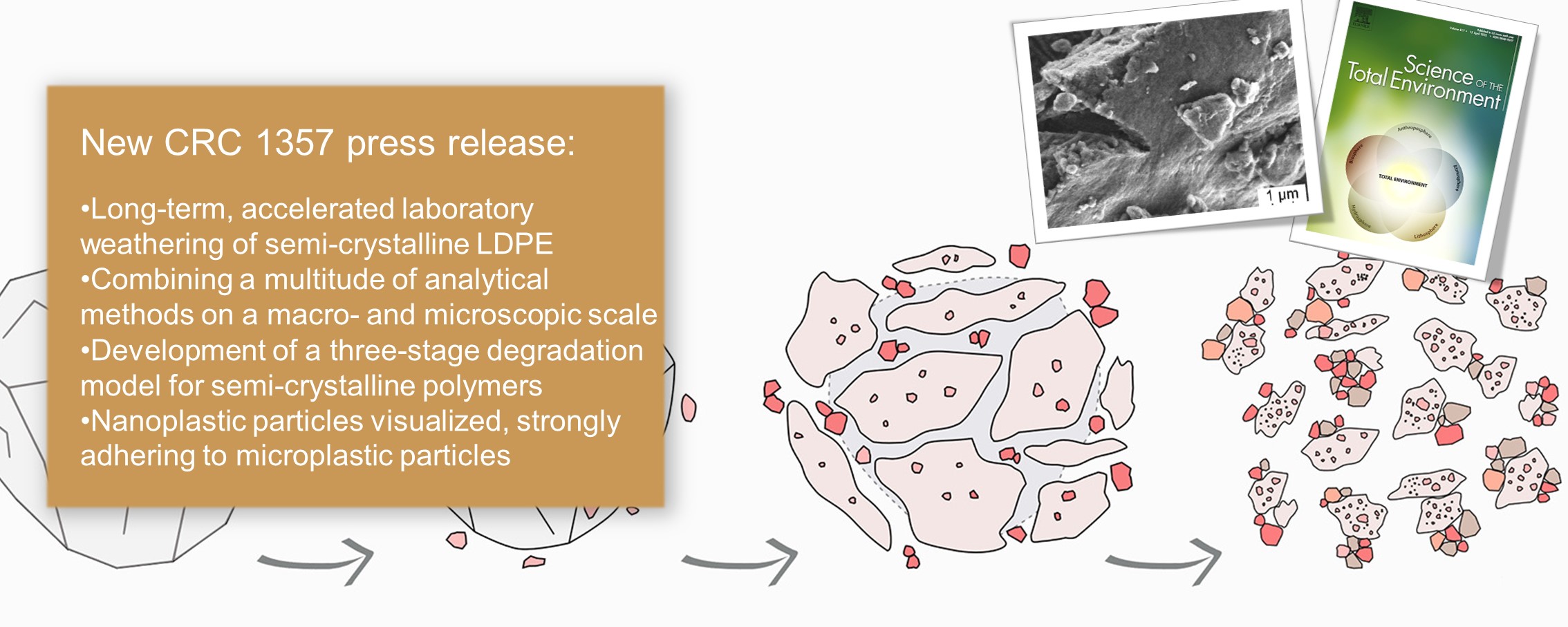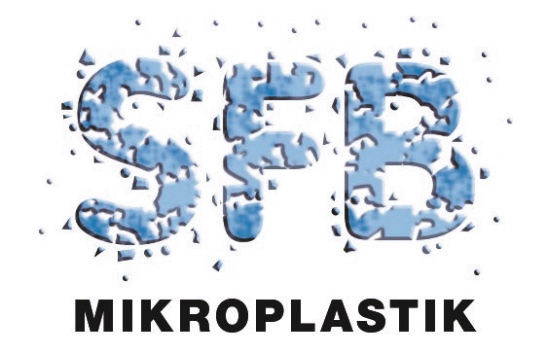News
New CRC 1357 press release: Nanoplastic particles love company: researchers in Bayreuth analyze polyethylene degradation in the environment
27.04.2022

We are pleased to announce a press release from the University of Bayreuth on the study below:
You can find the UBT press release here: https://www.uni-bayreuth.de/presse-releases/polyethylene-degradation
Nanoplastic particles love company: researchers in Bayreuth analyze polyethylene degradation in the environment
Polyethylene, a plastic that is both cheap and easy to process, accounts for nearly one-third of the world’s plastic waste. An interdisciplinary team from the University of Bayreuth has investigated the progressive degradation of polyethylene in the environment for the first time. Although the degradation process leads to fragmentation into ever smaller particles, isolated nanoplastic particles are rarely found in the environment. The reason is that such decay products do not like to remain on their own, but rather attach rapidly to larger colloidal systems that occur naturally in the environment. The researchers have now presented their findings in the journal Science of the Total Environment.
The authors of the study are: Teresa Menzel; Nora Meides; Anika Mauel; Ulrich Mansfeld; Winfried Kretschmer; Meike Kuhn; Eva M. Herzig; Volker Altstädt; Peter Strohriegl; Jürgen Senker; Holger Ruckdäschel.
"Degradation of low-density polyethylene to nanoplastic particles by accelerated weathering"
DOI: https://doi.org/10.1016/j.scitotenv.2022.154035
published in: Science of the Total Environment
Abstract: When plastics enter the environment, they are exposed to abiotic and biotic impacts, resulting in degradation and the formation of micro- and nanoplastic. Microplastic is ubiquitous in every environmental compartment. Nevertheless, the underlying degradation processes are not yet fully understood. Here, we studied the abiotic degradation of commonly used semi-crystalline, low-density polyethylene (LDPE) in a long-term accelerated weathering experiment combining several macro- and microscopic methods. Based on our observations, the degradation of LDPE proceeds in three stages. Initially, LDPE objects are prone to abrasion, followed by a period of surface cracking. A large number of secondary particles with a high degree of crystallinity are formed, with sizes down to the nanometer scale. These particles consist of highly polar oligomers leading to agglomeration in the final stage. We therefore suppose that weathered microplastic and nanoplastic particles will attach to colloidal environmental matter. This offers an explanation for the absence of free nanoplastic particles in natural samples.

